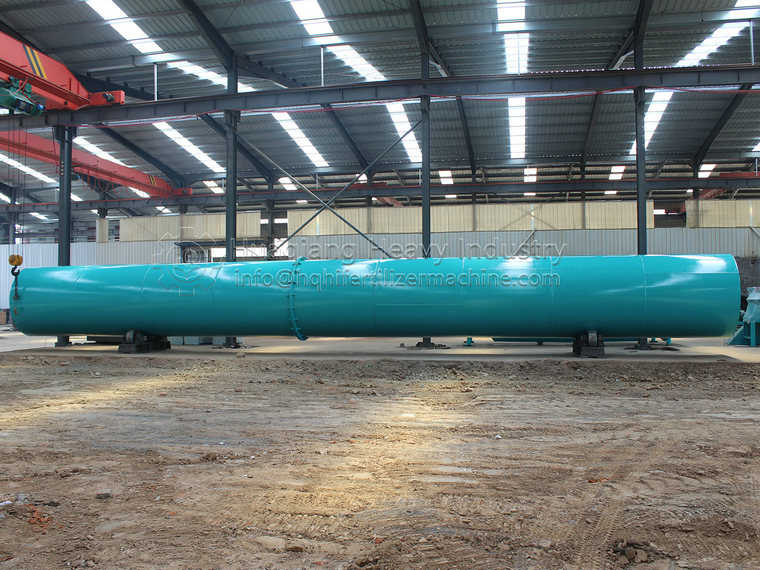The working principle of pig manure organic fertilizer granulator: Various dry powder materials are added from the top of the equipment, degassed, spiral pre compressed, and transported to the curved grooves of two rollers. The two rollers rotate at equal speed and in reverse direction, biting the materials into the grooves and performing forced compression. The pressure that the materials bear gradually decreases after passing through the compression zone, and its surface tension and gravity cause them to naturally come out, enter the crusher and the whole granulator for crushing and trimming, Then it enters the vibrating screen for screening, and the qualified products are sent to the finished product warehouse or directly packaged through a conveyor. The materials under the powder screen are sent back to the raw material warehouse for secondary rolling through a feeding device. The size of the squeezing force can be adjusted by the hydraulic system according to the particle strength needs. By changing the groove form of the roller surface, materials such as flakes, strips, olives, and flat balls can be obtained.
Rotary drum granulator product overview:
Rotary drum granulator has beautiful appearance, simple operation, low energy consumption, long life, uniform drying, easy maintenance and other characteristics, belongs to the most advanced organic fertilizer equipment in China. The product is suitable for cold, hot granulation and mass production of high, medium and low concentration compound fertilizer.
Its main features are as follows:
1, less investment, quick effect, good economic benefits, reliable performance.
2, small power, no three waste emissions, stable operation, easy maintenance, reasonable process layout, advanced technology, low production cost.
3, high ball strength, good appearance quality, corrosion resistance, wear resistance, low energy consumption.
4, the cylinder is lined with special rubber plate or acid-resistant stainless steel liner, which realizes automatic scar removal and tumor removal, and cancels the traditional scraper device.
Working principle of rotary drum granulator:
The motor drives the belt and pulley, drives the drive shaft through the reducer, and works opposite to each other through the open gear mounted on the drive shaft and the big gear ring fixed on the body. The material is added from the feed end, the special structure inside the cylinder makes it into particles, and flows out through the discharge port. Due to the continuous entry of the material and the continuous rotation of the granulator, the mass production of the organic fertilizer production line can be realized.

.jpg)



.jpg)
.jpg)

.jpg)